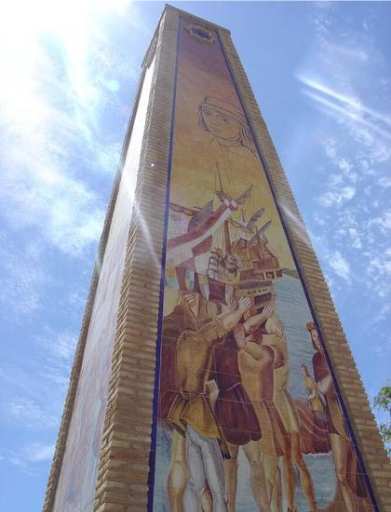Para ofrecer las mejores experiencias, utilizamos tecnologías como las cookies para almacenar y/o acceder a la información del dispositivo. El consentimiento de estas tecnologías nos permitirá procesar datos como el comportamiento de navegación o las identificaciones únicas en este sitio. No consentir o retirar el consentimiento, puede afectar negativamente a ciertas características y funciones.
El almacenamiento o acceso técnico es estrictamente necesario para el propósito legítimo de permitir el uso de un servicio específico explícitamente solicitado por el abonado o usuario, o con el único propósito de llevar a cabo la transmisión de una comunicación a través de una red de comunicaciones electrónicas.
El almacenamiento o acceso técnico es necesario para la finalidad legítima de almacenar preferencias no solicitadas por el abonado o usuario.
El almacenamiento o acceso técnico que es utilizado exclusivamente con fines estadísticos.
El almacenamiento o acceso técnico que se utiliza exclusivamente con fines estadísticos anónimos. Sin un requerimiento, el cumplimiento voluntario por parte de tu proveedor de servicios de Internet, o los registros adicionales de un tercero, la información almacenada o recuperada sólo para este propósito no se puede utilizar para identificarte.
El almacenamiento o acceso técnico es necesario para crear perfiles de usuario para enviar publicidad, o para rastrear al usuario en una web o en varias web con fines de marketing similares.
 The Obelisk of the Departure is a commemorative monument with reproductions in glazed tile of the frescoes by Vázquez Díaz from the Monastery of La Rábida.
Daniel Vázquez Díaz is a significant reference in our painting. Considered an artist who embodied tempered modernity in Spain in the early 20th century, he played a leading role in the modernization of Spanish art.
Vázquez Díaz was raised in Seville but lived in the Paris of the avant-garde. He imported Cézanne’s classical essence, developed ‘neocubism,’ and was a master to avant-garde masters. He was the official painter of the Republic and Francoism, and in the 1950s, he fully played his role as an artistic figure.
He was always an artist of multiple faces and multiple social and political readings: from the young pacifist draftsman narrating the horrors of World War I in France and Belgium to the man taking sides by portraying José Antonio, or Sánchez Mazas and Franco himself after the Nationalists’ victory. There is also the sharp draftsman who manages to capture Federico García Lorca, Ramón Gómez de la Serna, or Ignacio Sánchez Mejías; or the republican painter who, commissioned by the Government, paints the oil portrait of Indalecio Prieto; and the professional who executes the portrait of King Alfonso XIII in the same year. He was never interested in politics, only in his work, and within that work, portraits. His interest in capturing the personality of each individual goes beyond the world of portraiture and constituted a faithful X-ray of Spain at that time.
He received his initial training in Seville, continuing at the Prado Museum. He realized he didn’t know how to draw upon arriving in Paris. It was in France where he found a passion for drawing and became a draftsman.
Throughout his life, he was a lover of the beauty of the external world, an insatiable observer of nature; hence his loyalty to what painters call ‘the natural.’
He endowed drawing with an unknown and innovative personality. His naturalistic sketches reveal much about the study of the forms that surrounded his projected figures.
In 1918, he opened a studio in Madrid and began teaching. Years later, he won a competition for the chair of Mural Painting at the School of Fine Arts of San Fernando. From his chair, he would formally disseminate cubism, which was of great help for his landscapes of great architectural monumentality, also being a bridge figure to young artists, mainly those of the post-war and European avant-garde.
He was a notable muralist; his most well-known and outstanding work in this last facet is the allegorical murals he created at the Monastery of La Rábida in Palos de la Frontera, Huelva, between 1927 and 1930, contributing to his consecration.
The Obelisk of the Departure is a commemorative monument with reproductions in glazed tile of the frescoes by Vázquez Díaz from the Monastery of La Rábida.
Daniel Vázquez Díaz is a significant reference in our painting. Considered an artist who embodied tempered modernity in Spain in the early 20th century, he played a leading role in the modernization of Spanish art.
Vázquez Díaz was raised in Seville but lived in the Paris of the avant-garde. He imported Cézanne’s classical essence, developed ‘neocubism,’ and was a master to avant-garde masters. He was the official painter of the Republic and Francoism, and in the 1950s, he fully played his role as an artistic figure.
He was always an artist of multiple faces and multiple social and political readings: from the young pacifist draftsman narrating the horrors of World War I in France and Belgium to the man taking sides by portraying José Antonio, or Sánchez Mazas and Franco himself after the Nationalists’ victory. There is also the sharp draftsman who manages to capture Federico García Lorca, Ramón Gómez de la Serna, or Ignacio Sánchez Mejías; or the republican painter who, commissioned by the Government, paints the oil portrait of Indalecio Prieto; and the professional who executes the portrait of King Alfonso XIII in the same year. He was never interested in politics, only in his work, and within that work, portraits. His interest in capturing the personality of each individual goes beyond the world of portraiture and constituted a faithful X-ray of Spain at that time.
He received his initial training in Seville, continuing at the Prado Museum. He realized he didn’t know how to draw upon arriving in Paris. It was in France where he found a passion for drawing and became a draftsman.
Throughout his life, he was a lover of the beauty of the external world, an insatiable observer of nature; hence his loyalty to what painters call ‘the natural.’
He endowed drawing with an unknown and innovative personality. His naturalistic sketches reveal much about the study of the forms that surrounded his projected figures.
In 1918, he opened a studio in Madrid and began teaching. Years later, he won a competition for the chair of Mural Painting at the School of Fine Arts of San Fernando. From his chair, he would formally disseminate cubism, which was of great help for his landscapes of great architectural monumentality, also being a bridge figure to young artists, mainly those of the post-war and European avant-garde.
He was a notable muralist; his most well-known and outstanding work in this last facet is the allegorical murals he created at the Monastery of La Rábida in Palos de la Frontera, Huelva, between 1927 and 1930, contributing to his consecration.
